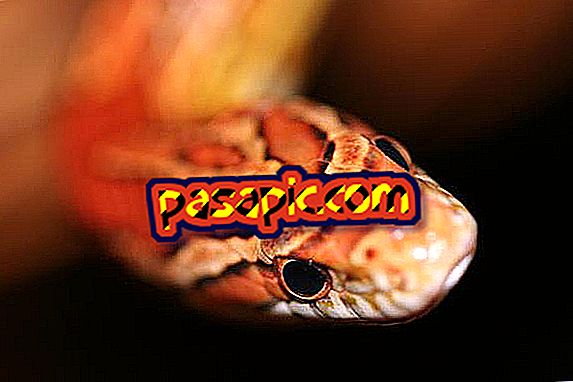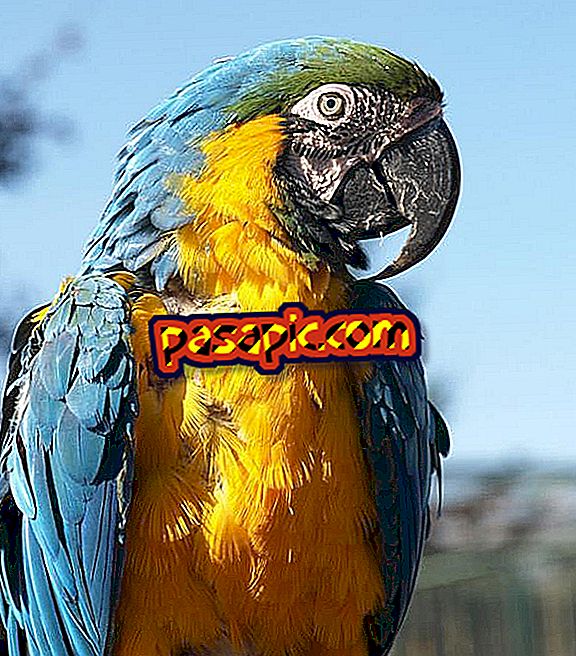How to care for a corn snake

Do you want to have a corn snake but do not know what your cares are? The Elaphe gutatta is a species of the family of snakes whose name is given by two possible explanations: the first says that it is due to the areas it inhabits, which are usually wheat fields and meadows, while the second argues its name for the silhouette in the shape of wheat that draw their scales on your abdomen.
Also known as Red Rat, it is one of the most common domestic snakes that people who love these reptiles choose. Are you thinking of having one? So keep reading this article in which we explain how to take care of a corn snake .
Care of the corn snake
In this article we will explain how to care for this species by dividing each care in a section. So, the care of a corn snake are the following:
- Suitable habitat
- Conditions of the terrarium.
- Feeding.
- Maintenance.
- Handling.
- Reproduction.
- Doubts about the corn snake.
Adequate habitat
In freedom the corn snake usually inhabits fields and meadows where it easily finds mice and other rodents or small animals. This reptile is found mainly in North America and northern Mexico and is characterized by having yellow scales with orange triangles surrounded by black. They can reach almost a meter and a half long and usually are not considered aggressive.
Taking into account the areas in which the corn snake lives in freedom we must provide optimal conditions to have it in our home.

The perfect terrarium
We can not perfectly recreate the natural habitat of the corn snake, but we can do everything in our power to make it feel comfortable and live in good conditions. For this we must take into account the following aspects when thinking about the terrarium for our snake:
- Size Adult corn snake can reach one and a half meters. Consequently, the space in which he lives should have adequate dimensions so that he can carry out his daily activities without difficulty: warm up, feed himself, soak up, etc. Therefore, the size of the terrarium should be between 80cm and 130cm, at least.
- Temperature It is one of the most important aspects in the care of a corn snake, especially in people who have not had these animals as pets before. This species is nocturnal, so during the night it takes advantage to absorb the accumulated heat throughout the day. In captivity we must provide the terrarium with a heating that provides a temperature between 23 and 20 degrees . It is not good to center all the heat in a point or that this exceeds the recommended temperature, since the animal could spend too much time trying to absorb heat and suffer burns. You can get a suitable heater in a store where they have products for reptiles.
- Illumination Snakes need calcium and vitamin D3 to develop normally. While some species require ultraviolet light in captivity to dispose of these nutrients, it is not necessary in the case of the corn snake. Both nutrients are absorbed through food, mainly from mice. Remember that it is a nocturnal snake, so we must turn off the light during the night so that it carries out its normal cycle every day.
- Substrate It is advisable to cover the terrarium with natural substrate so that there is no risk in case the animal ingests it. The best option is to opt for the corn substrate . However, we can also cover the soil with newspaper or cypress bark. Whatever your choice, make sure it is not toxic to the snake.
- Decorative elements Providing the terrarium of the corn snake with elements that recreate its natural habitat is vital for the snake to feel comfortable. The main thing is to create hiding places where you can go unnoticed or hide when you want, otherwise it could stress. Another good option is to include branches in your space that you can climb.
Feeding the corn snake
Corn snakes are carnivorous . We can choose to feed them with dead or alive animals. In the first case it is best to buy frozen mice, while with the second option we should shake the animal with tweezers in front of the snake to attract its attention. The size of the animal that we are going to give it must be proportional to that of the snake
Here's how to feed a corn snake with the Munson Plan in mind:
- Newborn snake: a pinky mouse every 5 days.
- Snake between 1 and 4 months: two pinky's mice every 5 days.
- Snake between 4 and 6 months: pinky mouse with first hair once a week.
- Snake between 6 and 9 months: small mouse once a week.
- Snake between 9 months and 1 year: medium mouse once a week.
- Snake between 1 year and a year and a half: adult mouse once a week.
- Serpent of more than 400 grams: large adult mouse and once a week.
It is advisable to consult with the veterinarian the feeding of the corn snake, since there are different aspects to take into account, such as if the snake is male or female, or if they are in a period of hibernation.
Another fundamental aspect to consider is to provide the terrarium with water permanently . Snakes like to moisten their skin to facilitate skin changes, and they need to hydrate every so often.

Maintenance of the animal
Among the cares of the corn snake we must also include the maintenance of its terrarium and our link with the animal.
- Hygiene. Like every animal, the corn snake defecates, sheds its skin, etc. For this reason we must ensure that the terrarium remains clean for the reptile to feel comfortable. It is not necessary to clean every day or every week, but at least once a month.
- Change of skin Snakes shed their skin every so often. It is easy to determine when this happens, since his eyes are covered with a white cloth and his skin loses its shine. In order to facilitate this process it is necessary that the animal has access to a place with water. We can put a bowl full of water or enable a deeper area imitating a lake or pond.
Manipulation of the corn snake
Adult corn snakes are not considered aggressive. It is normal that we want to interact with them and take them out of the terrarium from time to time, however, it is important to learn about how to do it and how not to do it. These are some tips:
- Wash your hands before and after touching the snake; These animals can transmit salmonellosis.
- Do not bring the snake to your face. Try to stay in your hands using both to hold it.
- Do not take the corn snake when its skin is changing.
- Avoid taking the snake out of its terrarium shortly after it has eaten.
- Do not force the reptile if it opposes leaving the premises. Otherwise we could make him associate human contact with something negative.
Reproduction of corn snake
This species is solitary, which is why it is not recommended that they live in company within the same enclosed space. However, we can put together two corn snakes for reproduction, always keeping in mind the 333 rule for the female:
- They must measure a minimum of 3 feet, that is, 91 cm.
- Its weight should be 300 grams.
- Must have a minimum of 3 years of age.
The mating season of these animals is warm, since when the temperatures increase the female emits a color that attracts the male. After mating, the female will deposit the eggs one month later. They can get up to 20 eggs, which will be deposited in a hidden place, where 10 weeks later will be born the young.
In this post we teach you to identify snake eggs.

Doubts about the corn snake
Is the corn snake poisonous?
The corn snake is not a poisonous species since it does not contain toxins. As a result, its bite is not deadly, but it can cause injuries because it is endowed with sharp teeth.
How much the corn snake lives
This reptile has a life expectancy of between 15 and 20 years, depending on whether it lives in freedom or is raised in captivity.
Does the corn snake hibernate?
In freedom, the rat-snake begins its period of hibernation in November. Moment in which is hidden in a hole where it remains until spring comes. However, it can awaken from lethargy if temperatures vary, rising again to the surface for one or two days.
In the case of the snake of corn in captivity, we must simulate the hibernation generating a colder temperature in its terrarium during 3 months.
Would you know what to do if a snake bites a dog? Find out in this article.


